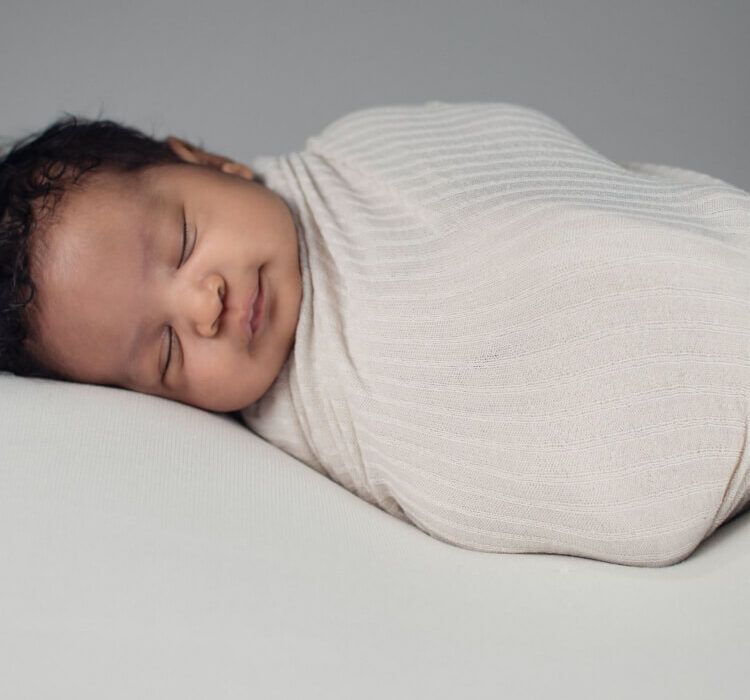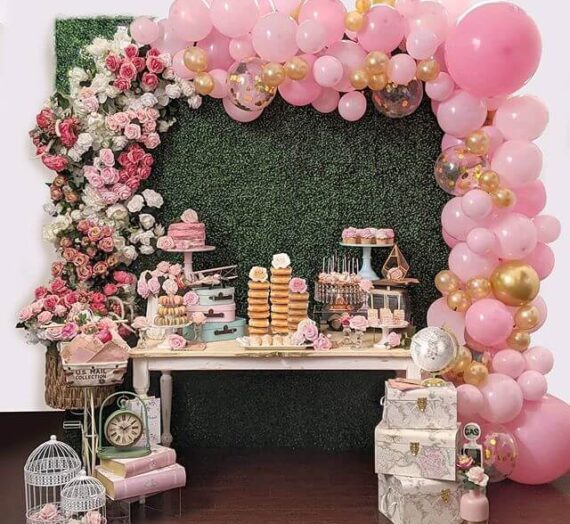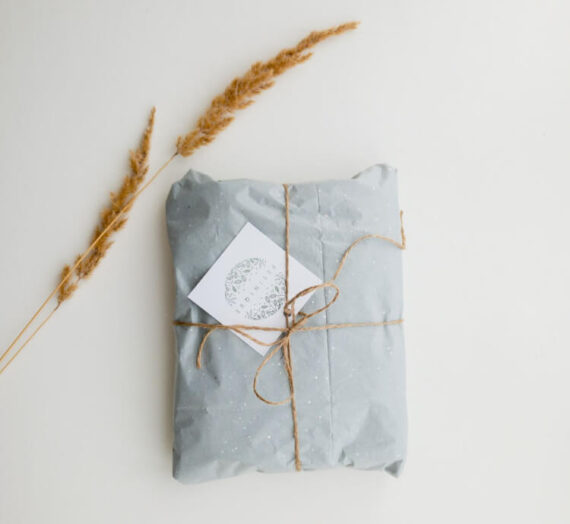When you have a baby on the way, the task of making your registry and gathering all the baby essentials can be super overwhelming. There is so many baby STUFF out there! It can be tough to know what you actually really need and what you can skip. If you are reading this you are probably questioning what are receiving blankets and swaddle blankets? And do you really need to have both?
What is a Receiving Blanket?
A receiving blanket is a thin, soft blanket, usually made from cotton or Bamboo. The typical size of a receiving blanket is 30 inches by 30 inches but can range from an 18-inch square to a 36-inch square. It’s an extremely versatile accessory used especially during the baby’s first year of life, for daily tasks like feeding, changing, and nursing.
Why Is It Called a Receiving Blanket?
A receiving blanket got its name from the custom to wrap the newborn in the blanket immediately after birth and before his family members received him.
What is a Swaddle Blanket?
A swaddle blanket used to wrap babies in a manner that snugly contains their arms and make them feel safe and secure.
Types of Swaddle Blankets:
- Velcro Swaddle- Use velcro to secure the swaddle on both sides
- Zipper Swaddle- Use a zipper in the front, back, or side to secure the swaddle blanket
- Winged Swaddle- Has two wings on both sides of the blanket
Can You Use a Receiving Blanket For Swaddle?
While it’s perfectly acceptable to use both receiving blankets and swaddles for swaddling, the swaddle blanket is often preferred by new parents because they were designed for swaddling, which makes the swaddling task easier and has less room for error.
If swaddling is your main purpose, it’s preferred to use the swaddle blanket, while the receiving blanket is really a multipurpose item.

What Is The Size of a Receiving Blanket
Receiving Blanket Size can be flexible and range from an 18-inch square to a 36-inch square.
Receiving Blankets vs Swaddle
Difference Between Swaddles and Receiving Blankets:
Best Swaddlers and Receiving Blankets (Organic & Toxic-Free)
This is unisex neutral colored, Parker Baby Swaddle Blankets is not only beautiful but also toxic-free, made from 100% organic cotton.
It comes in a 3-pack and the muslin blanket will get softer with every wash.
These IVY & EVER baby Receiving blankets are 47″ x 47″ and made from 100% soft organic cotton (certified by the global organic textile standard). It’s a 3-pack that has Been Designed for Both Boys and Girls and Features Two Adorable Woodland Animal Prints Paired With a Gorgeous Sage Green Swaddle.
SwaddleMe Original 100% Organic Cotton Swaddle, is really soft and comfortable. It’s an easy wrap swaddle that creates a snug, cozy, womb-like feeling for your baby. It has soft adjustable wings that help keep the baby safe and secure while allowing for natural movement.
What Are Receiving Blankets Used For?
The receiving blanket is a versatile, multipurpose item and can have many usages:
- Right After Birth– Usually, the first time a baby is wrapped in a receiving blanket is in the hospital, right after birth, to keep him clean and warm.
- Swaddle your Baby– as mentioned above, the receiving blanket can be used for swaddling your baby and make him feel warm and secure.
- Actual Blanket- It’s also perfect to use as an actual blanket, in the stroller or bed. Since the baby receiving blankets are lightweight blanket, they will do great during the spring and fall or even a cool summer day. For wintertime, it’s recommended to use a thicker, warmer blanket.
- Burp Cloth- We like to keep things simple here, and not purchasing too many extra items. The receiving blanket can use perfectly as a burp cloth, as they offer more coverage than a traditional smaller burp cloth.
An additional advantage is the softer touch of the receiving blanket against your little newborn skin.
It is lightweight and can fit perfectly in your diaper bag, so there’s no need to load up the diaper bag with too many extra items - Wrapping baby up in or after a bath– When my oldest kid was a newborn, he didn’t like the feel of the water and was crying whenever we washed him.
Our doctor suggested we would keep him wrapped in a receiving blanket when putting him in the bathtub, and gradually take it off while he’s in the tub. This actually worked perfectly, as he felt more snuggled and safer. - Breastfeeding cover-ups- If you prefer privacy while breastfeeding your baby, to keep things simple, you don’t have to buy a specific nursing cover (although it has it’s advantages). You can try using a baby receiving blanket instead.
I personally liked my nursing cover, but I know many moms who just use a receiving blanket. - Changing table cover- When you and your baby are on the go, you can quickly convert the blanket into a convenient changing area. No need to purchase a travel changing mat—the blanket can serve as a barrier between the changing-table surface and your baby.
- Full Bib – when they start with solid food, things can get messy! The receiving blanket can cover their whole body, and use it as a large bib.
- Clean Up Spills- If the little one is spilling water or milk on the couch, the blankets will absorb the spill better than a paper towel.
- Cloth Diapers- this is a more advanced option, but the receiving blankets can be used at least for the first months as flat cloth diapers.
- Stroller Cover – if you need to block sun or rain. Make sure you keep it covered temporarily, for a short period of time, as it can get hot pretty quickly inside the stroller.
- Picnic Blanket– we actually use the receiving blanket like a picnic blanket on its own, or on top of another picnic blanket, to keep the area clean for the little ones.
- Playmats– When you are out and about and you need a clean surface for your baby to play on, a receiving blanket is a great solution. They are a big enough size that they give your little one the space to crawl, roll, play, and even sleep.
- As a Sleep Prop– My younger daughter sleeps with a receiving blanket since she’s a newborn. She likes the familiar scent and warmth of the blanket, and it soothes her quickly.

Ideas For Repurposing Receiving Blankets
Once your baby has outgrown his or her receiving blankets you can convert them into new items. This is definitely an eco-friendly alternative, which can also save you money since the blanket is so versatile.
Repurposing Receiving Blankets Ideas:
- Keep as a Memory– Many parents will save a baby’s first blanket as a token of their infant’s first few months of life.
- Create a Quilt– You can make quilts, out of your baby’s first blanket and keep it in your house for the years to come.
- Use as a Doll blanket– toddlers like to play pretend. This blanket can use for imagination games as a doll blanket.
- Keeping in the car for spills or emergencies– the blanket will absorb way better than paper towels or napkins and is easily stored.
- Sew Blankets into Pillows
- As Furniture Covers– there’s an endless variety of patterns and colors, which can make a fashionable cover for your furniture.
- Gift Wrap. Receiving blankets come in so many beautiful colors, you can transform it and use as a gift wrap.

How Many Receiving Blankets Do I Need?
It depends on how often you do your laundry, but at a minimum, three receiving blankets are recommended, one in your diaper bag and an extra to use when the other one is dirty.
Receiving Blanket Safety Tips
Even though it’s only a blanket, there are some safety tips to follow, as you can never be too careful with babies.
- Never cover your baby completely with a blanket in his first year.
- Do not leave loose blankets in your baby’s stroller, bed, or crib.
- Do not use a heavy, thick blanket, as it may cause overheating.
- Prefer organic Cotton blankets, made by a trusted brand.
- Do not wrap the blanket around your baby’s head or neck.
- Stop swaddling your baby once he starts rolling over.

Overall, the baby Receiving Blankets are a great, versatile product to have on hand.
So bring out that receiving blanket of your little one and put it to good use!











